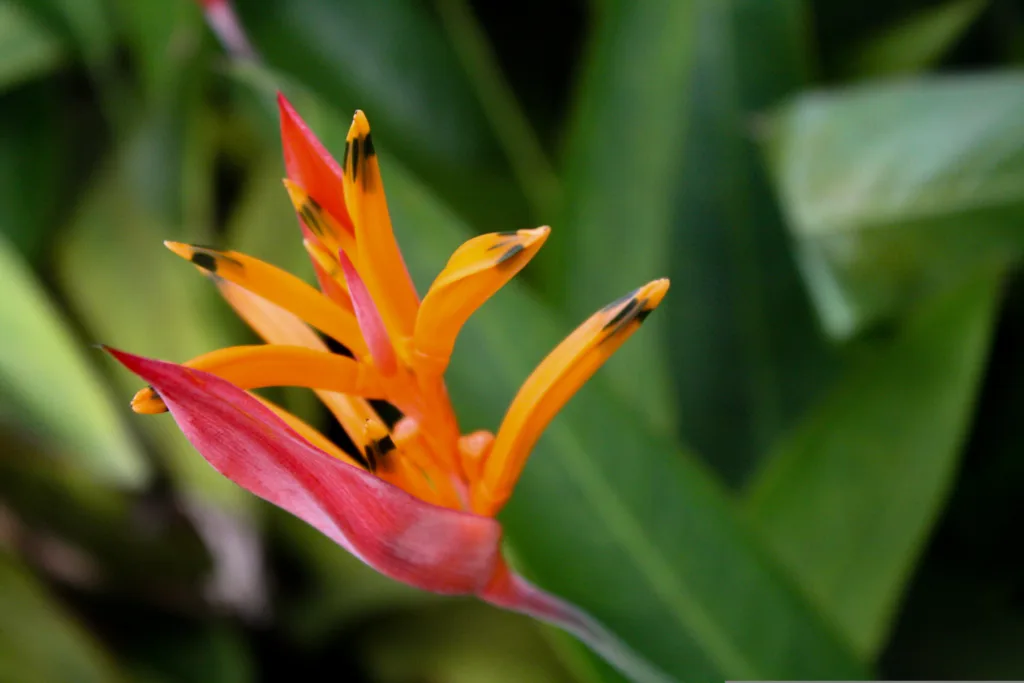Heliconia is a beautiful tropical plant that is known for its stunning and exotic flowers. These plants are fairly low-maintenance and can add a touch of elegance to any garden or indoor space. However, like any other plant, heliconias require pruning to keep them healthy and looking their best. In this article, we will discuss everything you need to know about pruning heliconia.
Heliconias should be pruned on a regular basis to remove dead or damaged leaves, flowers, and stems. It is best to prune heliconias after they have finished flowering, usually in the fall or winter. This will encourage new growth and prepare the plant for the next blooming season.
Before you start pruning, make sure you have a clean and sharp pair of shears. You should also wear gloves to protect your hands from the sharp edges of the leaves and stems. Here are the steps you should follow when pruning heliconia:
1. Remove dead or damaged leaves: Start by identifying any dead or damaged leaves and remove them by cutting them off at the base with your shears.
2. Cut back old flower stalks: Heliconia flowers grow on long stalks, which can be cut back once they have finished blooming. Cut the stalks as close to the base of the plant as possible.
3. Thin out overcrowded stems: Heliconias can grow quie tall and may become overcrowded over time. If this happens, you can thin out some of the stems to promote new growth. However, be careful not to remove too many stems as this can damage the plant.
4. Prune for shape: If your heliconia is growing in an irregular shape, you can prune it to create a more symmetrical appearance. Cut back any stems that are growing in an undesirable direction and shape the plant as desired.
5. Remove suckers: Heliconias can produce suckers or shoots from the base of the plant. These should be removed to prevent the plant from becoming overcrowded.
After you have finished pruning, make sure to clean your shears with rubbing alcohol to prevent the spread of disease.
Pruning heliconia is an important part of plant care that can help keep your plant healthy and looking its best. By following the steps outlined in this article, you can ensure that your heliconia stays in top shape and produces beautiful flowers year after year. Remember to prune your heliconia after it has finished flowering, and be careful not to remove too much of the plant at once. With proper pruning, your heliconia will thrive and add a touch of tropical beauty to your garden or indoor space.
How Do You Maintain Heliconias?
To maintain heliconias, it is important to provide them with bright light and regular watering. However, overwatering should be avoided, and the soil should be allowed to almost dry out before watering again. It is also important to ensure that the heliconias do not stand in water. These plants thrive in temperatures of at least 70 degrees F or higher, and should never be subjected to temperatures below 50 F. To summarize the key points, here is a bullet list:
– Provide heliconias with bright light
– Water regularly, but avoid overwatering
– Allow soil to almost dry out between watering
– Avoid allowing heliconias to stand in water
– Maintain temperatures of at least 70 degrees F or higher
– Do not subject heliconias to temperatures below 50 F.

How Do You Prune Heliconia Psittacorum?
Pruning Heliconia Psittacorum requires a delicate approach since the plant grows in a unique pattern. However, you can lightly prune the plant whenever needed to remove dead stems or damaged leaves. It is essential to keep pruning to a minimum since excessive pruning can harm the plant. To prune Heliconia Psittacorum, you can follow these steps:
1. Identify any dead stems or damaged leaves on the plant.
2. Use clean shears to remove the identified stems and leaves.
3. Limit pruning to the necessary stems and leaves only.
4. Remove any stalks that have already flowered by cutting them as close to the ground as possible.
5. Avoid excessive pruning since it can harm the plant.
By following these steps, you can effectively prune Heliconia Psittacorum without damaging the plant. Remember to keep pruning to a minimum, and alwys use clean shears to prevent the spread of diseases.
Will Heliconia Grow Back?
Heliconia plants are herbaceous perennials, which means that they will usually die back to their roots during the autumn/winter season. However, they will bounce back with fresh foliage and eventually grow flowers during the summer season. This process of dying back and regrowing is a natural part of the plant’s life cycle. Therefore, if you properly care for your heliconia plant, it should grow back each year.
Conclusion
Pruning heliconia plants requires a delicate touch and careful consideration. While it is important to remove dead stems and damaged leaves, excessive pruning can harm the plant’s growth pattern and flowering potential. It is recommended to prune away stalks that have already flowered, cutting them as close to the ground as possible. Additionally, pruning should be kept to a minimum as heliconias are herbaceous perennials that die back to their roots over the autumn/winter before bouncing back with fresh foliage and flowers in the summer. By following these guidelines, heliconia owners can maintain the health and beauty of their plants for years to come.
